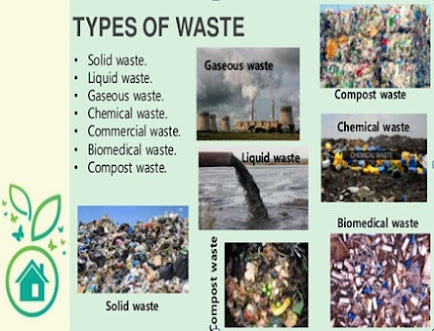Natural sources:
Natural sources of water pollution include erosion, animal wastes,
and the leaching of minerals from rocks.
Anthropogenic sources:
a) Sewage Effluent:
Sewage is the spent water of
the community. Domestic sewage (human wastes, soaps, and detergents) contains
99% water and 1 % solid.
Characteristics of Sewage Effluents:
Organic solids: proteins, carbohydrates and, fats.
Inorganic solids: Grit, Salts and metals, insoluble minerals and,
heavier particles.
Domestic sewage is generally discharged into water bodies like rivers, lakes,
etc. This causes severe water pollution.
b) Industrial Effluents:
The major source of water pollution is the wastewater discharged
from different industries.
1. Textile industry
2. Industry
3. Dairy Industry
4. Fertilizers Industry
5. Petroleum
6. Metal-Plating Industry
7. Pharmaceutical Industry
8. Rubber Industry
Characteristics of
Industrial Effluents:
1. Textile Industry:
Wastewater containing high Nitrogen and BOD (Biological Oxygen
Demand). The wastewater also has high dyes, grease, and high pH due to the use of
NaOH in the operations.
2. Sugar Industry:
Wastewater has high BOD, large amount of organic matter and
solids. It causes organic pollution and odorous conditions at the disposal
sites.
3. Dairy Industry:
The wastewater has a high amount of milk constituents, a high
BOD, and organic matter. It causes depletion of oxygen and odorous conditions.
4. Fertilizers Industry:
The wastewater containing high amount of ammonia, phosphorous, and
fluorides.
5. Petroleum Refining:
The wastewater from this industry has a high BOD, Oils,
phenols, sulfides, toxic substances, and high temperature.
6. Pulp and Paper Industry:
The wastewater of this industry contains high BOD and organic
matter.
7. Metal Plating Industry:
The wastewater containing cyanides, nickel, chromium,
and zinc. The pollutants are highly toxic to living organisms.
8. Pharmaceutical Industry:
The composition of wastewater depends upon the type of chemicals
(drugs) manufactured in the industry. The wastewater has either high
alkalinity or high acidity. The effluents also contain toxic organic
dissolved and suspended matter.
9. Rubber Industry:
The wastewater has a high BOD, chlorides, and suspended solids. It has variable pH with a bad odor.
c) Agricultural
runoff:
·
Chemical fertilizers and pesticides have become
essential for present-day high-yielding crops.
· Runoff from agricultural fields and animal
farms is the source of agricultural effluents. Consequently, they have become a
potential source of water pollution.
·
Fertilizers contain major plant nutrients
mainly nitrogen, phosphorous, and potassium.
·
Excess fertilizers may reach the groundwater by
leaching or may be mixed with surface water of rivers, lakes, and ponds by
runoff and drainage.






No comments:
Post a Comment